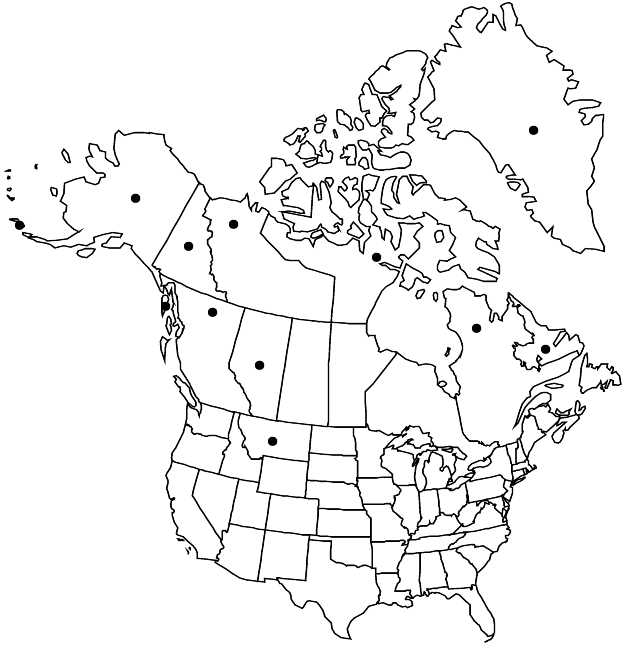Difference between revisions of "Sagina nivalis"
Novit. Fl. Suec. Mant. 3: 31. 1842.
FNA>Volume Importer |
imported>Volume Importer |
||
| (3 intermediate revisions by 2 users not shown) | |||
| Line 10: | Line 10: | ||
|name=Spergula saginoides var. nivalis | |name=Spergula saginoides var. nivalis | ||
|authority=Lindblom | |authority=Lindblom | ||
| + | |rank=variety | ||
|publication_title=Physiogr. Sällsk. Tidskr. | |publication_title=Physiogr. Sällsk. Tidskr. | ||
|publication_place=1: 328. 1838 | |publication_place=1: 328. 1838 | ||
| Line 16: | Line 17: | ||
|name=Sagina intermedia | |name=Sagina intermedia | ||
|authority=Fenzl ex Ledebour | |authority=Fenzl ex Ledebour | ||
| + | |rank=species | ||
}} {{Treatment/ID/Synonym | }} {{Treatment/ID/Synonym | ||
|name=Spergella intermedia | |name=Spergella intermedia | ||
|authority=(Fenzl ex Ledebour) Á. Löve & D. Löve | |authority=(Fenzl ex Ledebour) Á. Löve & D. Löve | ||
| + | |rank=species | ||
}} | }} | ||
|hierarchy=Caryophyllaceae;Caryophyllaceae subfam. Alsinoideae;Sagina;Sagina nivalis | |hierarchy=Caryophyllaceae;Caryophyllaceae subfam. Alsinoideae;Sagina;Sagina nivalis | ||
| Line 42: | Line 45: | ||
-->{{#Taxon: | -->{{#Taxon: | ||
name=Sagina nivalis | name=Sagina nivalis | ||
| − | |||
|authority=(Lindblom) Fries | |authority=(Lindblom) Fries | ||
|rank=species | |rank=species | ||
| Line 57: | Line 59: | ||
|publication year=1842 | |publication year=1842 | ||
|special status= | |special status= | ||
| − | |source xml=https:// | + | |source xml=https://bitbucket.org/aafc-mbb/fna-data-curation/src/2e0870ddd59836b60bcf96646a41e87ea5a5943a/coarse_grained_fna_xml/V5/V5_294.xml |
|subfamily=Caryophyllaceae subfam. Alsinoideae | |subfamily=Caryophyllaceae subfam. Alsinoideae | ||
|genus=Sagina | |genus=Sagina | ||
Latest revision as of 22:10, 5 November 2020
Plants perennial, cespitose, forming low cushions, glabrous. Stems ascending or spreading, radiating from axils of basal rosette leaves, sometimes purple tinged, many-branched, slender. Leaves: axillary fascicles absent; basal in primary rosettes, secondary rosettes absent, blade subulate to linear, to 20(–30) mm, fleshy, apex apiculate, glabrous; cauline connate basally into shallow cup, blade often purplish, subulate to linear, 4–16 mm, becoming shorter toward stem apex, scarious, apex apiculate, glabrous. Pedicels filiform, glabrous. Flowers mostly terminal, 4-merous or 4- and 5-merous; calyx base glabrous; sepals frequently purplish, nearly orbiculate to elliptic, 1.5–2 mm, hyaline margins nearly always purple, sometimes only at apex, apex rounded, glabrous, remaining appressed following capsule dehiscence; petals narrowly elliptic, 1.5–2 mm, equaling to slightly shorter than sepals; stamens 8 or 10. Capsules 2–3 mm, usually shorter than sepals, dehiscing to base. Seeds brown, obliquely triangular with abaxial groove, 0.5 mm, lateral surfaces frequently with elongate ridges, abaxial surface appearing smooth to pebbled. 2n = 56, 88.
Phenology: Flowering mid-late summer.
Habitat: Sandy or gravelly beaches, coastal rocks, alluvial plains, fresh glacial moraines, low, swampy tundra, alpine areas
Elevation: 0-2800 m
Distribution

Greenland, Alta., B.C., Nfld. and Labr. (Labr.), N.W.T., Nunavut, Que., Yukon, Alaska, Mont., arctic Eurasia.
Discussion
Selected References
None.